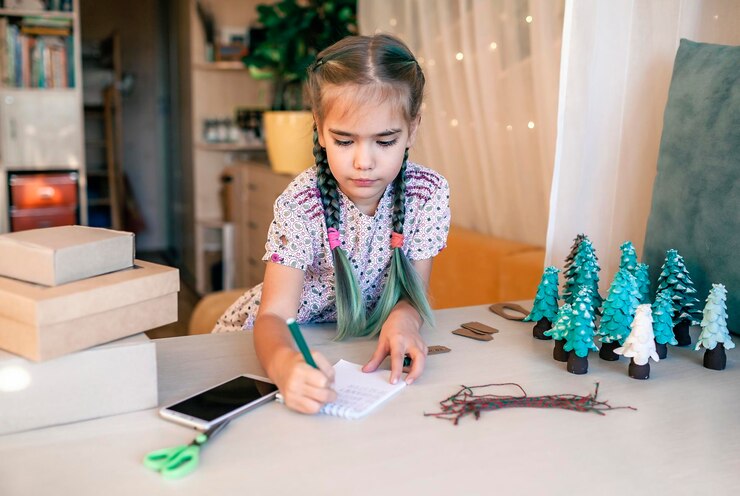Education
What to Expect from Class-Based Counseling Programs

Introduction
Class-based counseling programs offer a structured path for aspiring counselors, providing the foundational and advanced skills necessary to excel in the field. These programs combine academic knowledge with practical experience, equipping students to support diverse client needs. Whether you are considering pursuing a career in counseling or looking to specialize further, understanding what these programs entail is essential for making an informed decision.
Structure and Format
Most class-based Counseling Courses follow a traditional academic structure, offering a mix of theoretical coursework, practical application, and experiential learning. Courses are typically spread across several semesters, providing a comprehensive education covering various facets of counseling, from psychological theories to counseling ethics. Classes often involve lectures, discussions, role-playing, and supervised practicums, creating an immersive learning environment.
Curriculum Highlights
The curriculum of a class-based counseling program is designed to help students thoroughly understand human behavior, development, and interpersonal communication. Core courses generally include developmental psychology, counseling theories, assessment techniques, and mental health disorders. Additionally, many programs offer elective courses or specializations in family counseling, substance abuse, and trauma-informed care, allowing students to tailor their education to specific career interests.
Benefits of Collaborative Learning
Classroom learning in a counseling program benefits from the dynamic of peer interaction. Students can collaborate, share perspectives, and learn from each other’s insights. Group projects and discussions foster a sense of community and encourage the development of communication and empathy—critical skills for any counselor. Collaborative learning environments also simulate real-world counseling scenarios, where teamwork and cooperation are often necessary.
Skills Development
One of the primary objectives of a counseling program is to develop essential skills such as active listening, critical thinking, and emotional intelligence. Students enhance their ability to analyze and resolve complex issues, develop treatment plans, and communicate effectively with clients through various assignments and projects. Role-playing exercises and supervised practice sessions are integral components, allowing students to apply theoretical knowledge in a safe, controlled environment.
Assessment and Feedback
Assessments in class-based counseling programs go beyond traditional exams. Students are evaluated through practical examinations, reflective papers, and project-based assignments. Ongoing feedback from instructors helps students identify their strengths and areas for improvement. This continuous evaluation ensures that students not only absorb information but are also capable of effectively implementing their knowledge in practice.
How to Choose the Right Program
Selecting the right counseling program involves considering several factors, including accreditation, faculty expertise, available specializations, and program format. Accreditation ensures that the program meets industry standards, which is crucial for future licensure. Researching faculty credentials and program alums can also provide insights into the program’s quality and the career paths it supports. Additionally, prospective students should consider their preferred learning style—whether they flourish in small, interactive classes or larger, lecture-based formats.
Conclusion
Class-based counseling programs are instrumental in shaping competent, compassionate counselors capable of making a positive impact on the lives of others. The combination of rigorous academic study and practical application ensures that graduates are well-prepared to address the diverse challenges they will encounter professionally. For those committed to pursuing a career in counseling, these programs offer a supportive and enriching environment to begin their journey.
Education
Creative Ways to Engage Second Graders in Storytelling

Understanding the Power of Storytelling in Education
As an educational tool, storytelling can transform young children’s learning experiences. It is central to developing creative and critical thinking skills. For second graders, storytelling helps enhance their vocabulary and improves their ability to express ideas clearly. In particular, resources such as 2nd grade writing prompts worksheets can provide valuable frameworks that guide students in creating their narratives. Through storytelling, children learn to weave tales and enhance their ability to empathize and understand complex emotions.
Educators have long seen storytelling as more than just an enjoyable activity. It can serve as a gateway to improving comprehension and retention abilities. According to experts, children actively participating in storytelling show improved emotional intelligence and empathy—attributes crucial today. The art of storytelling provides a safe space for children to explore various narratives and characters, allowing them to express themselves freely and confidently.
Interactive Storytelling Techniques for Young Learners
Integrating interactive storytelling techniques is essential to captivate second graders. Methods like puppets or creating story maps allow children to visualize the narrative structure. Additionally, inserting role-playing elements can significantly boost engagement, enabling students to immerse themselves in the characters they portray. This immersion enhances their connection to the story, helps build language skills, and boosts memory retention.
Another effective strategy is leveraging scavenger hunts with storyline elements. This activity encourages students to think critically and work collaboratively to solve the tale’s mysteries, reinforcing various learning objectives. These playful yet educational activities can make the learning process dynamic, ensuring children remain interested and invested in storytelling.
The Role of Technology in Storytelling
Technology is reshaping how stories are crafted and shared. Tools and apps designed specifically for young storytellers can make the process more engaging and fun. Platforms that allow for the creation of digital stories can motivate students to experiment with different narrative forms. Moreover, these technological aids can stimulate interest in creative exploration, as children can incorporate visuals, sound, and text in their stories. This multidimensional approach makes storytelling a holistic experience that touches on various sensory elements, further enriching the educational experience.
By integrating technology in storytelling, educators can cater to diverse learning styles, ensuring that all students can engage with the material in a way that resonates with them. Digital storytelling allows students to leverage their technological prowess and creativity, weaving these skills together to produce unique and memorable narratives.
Creating a Story-Friendly Environment in the Classroom
For storytelling to truly take root, the classroom must be a nurturing environment that encourages creativity. Dedicated storytelling corners and a rich collection of diverse books can make a significant difference. Such spaces empower students to explore their creative abilities in a comfortable setting. In a story-friendly classroom, children feel encouraged to experiment with different storytelling methods, empowering them to find their unique voices.
Teachers can enhance the atmosphere by organizing ‘storytime’ sessions, where students share personal tales or experiences. This not only boosts confidence but helps build a sense of community among classmates. A supportive environment is key in facilitating the flow of ideas, ensuring students are enthusiastic participants in their storytelling journeys.
Incorporating Cultural Narratives and Diversity
Introducing stories from various cultures into the curriculum enriches the storytelling experience. It opens up a world of diverse perspectives and traditions for second graders to explore. Cultural narratives help students understand and appreciate differences, fostering a sense of inclusivity and empathy among children. By integrating diverse stories, educators prepare students to become global citizens, aware and respectful of the world’s multifaceted cultural tapestry.
Inviting guest speakers from different cultural backgrounds or celebrating international storytelling festivals can further enhance the classroom’s multicultural environment. Such immersive experiences provide tangible insights into different ways of living, broadening students’ understanding of the global community they are a part of.
Measuring Success: Assessing Storytelling Skills
Assessment in storytelling should focus on qualitative aspects rather than rote performance metrics. Tools such as creative presentations, storyboards, or peer feedback can offer insights into how well students grasped story elements and expressed originality in their work. This method allows educators to nurture talent rather than restrict it, emphasizing personal growth and development.
These methods also enable continuous improvement, as feedback helps students identify areas for growth and gradually strengthens their storytelling abilities. Educators can guide students to refine their storytelling skills by focusing on creative evaluation, fostering a lifelong love for narratives.
-

 BLOG12 months ago
BLOG12 months agoBebasIndo: Transforming Service Accessibility Across Indonesia
-

 TECH12 months ago
TECH12 months agoLepbound: Unlocking the Hidden Power of Optimization in Science and Technology
-

 ENTERTAINMENT12 months ago
ENTERTAINMENT12 months agoDiamond Pink: A Rare Gem, A Precious Possession
-

 BUSINESS11 months ago
BUSINESS11 months agoChannelsyncharma: Your Guide to Effective Channel Management
-

 BUSINESS11 months ago
BUSINESS11 months agoQuick Relief with Immediate 0.3 Folex
-

 TECH12 months ago
TECH12 months agoGirma Zekpa: An Influential Figure in Business and Technology
-

 NEWS11 months ago
NEWS11 months agoSo Ji-Sub LPSG: From Model to Star, the Evolution of a Korean Icon
-

 HEALTH11 months ago
HEALTH11 months agoCarson Dennis Dentist Orthodontics Navy HPSP: A Comprehensive Guide
